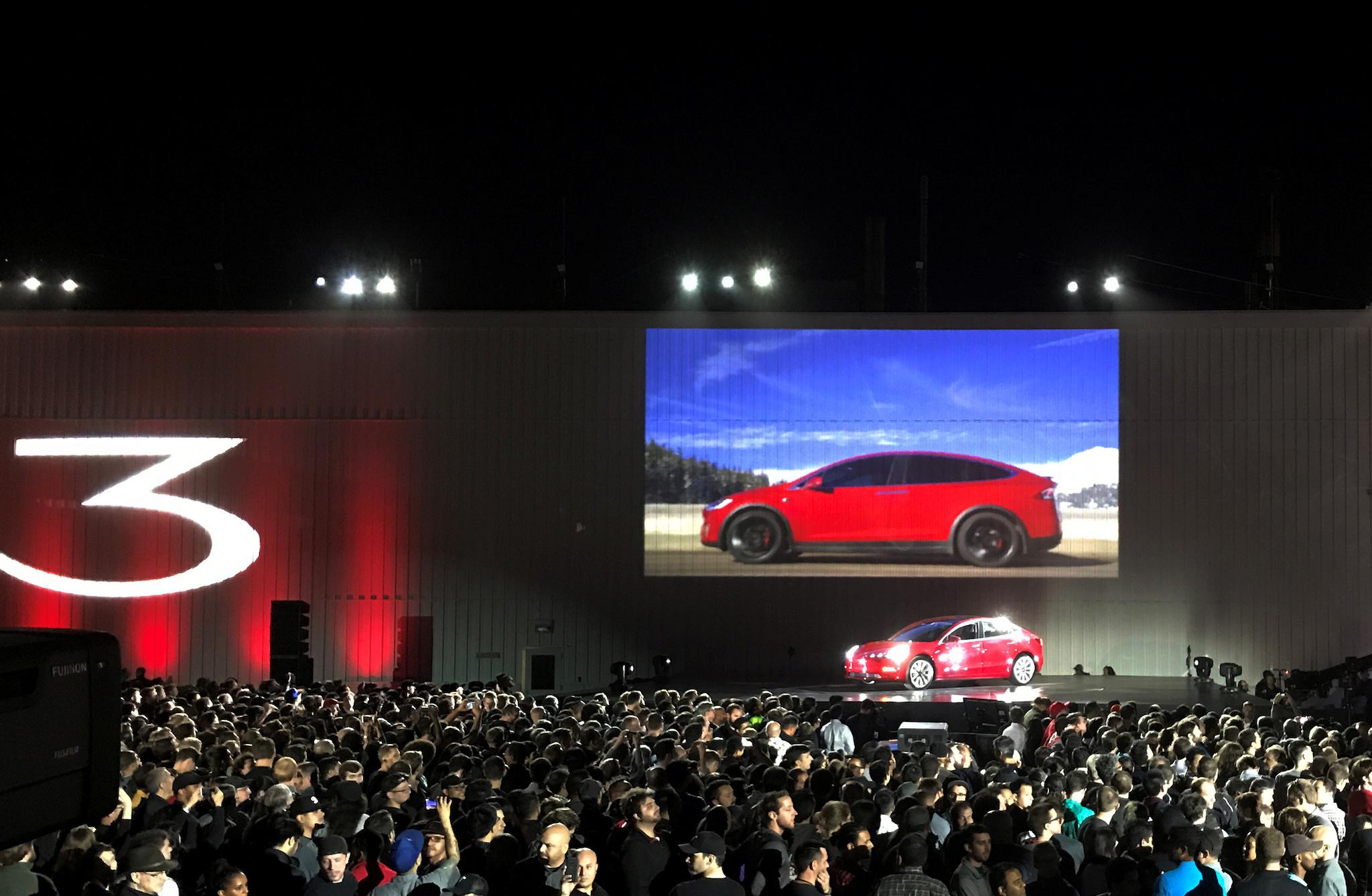Tesla Model 3: Company releases its most affordable car yet but few people can actually buy it
Many people who have paid deposits won't actually get hold of the car for years

Your support helps us to tell the story
From reproductive rights to climate change to Big Tech, The Independent is on the ground when the story is developing. Whether it's investigating the financials of Elon Musk's pro-Trump PAC or producing our latest documentary, 'The A Word', which shines a light on the American women fighting for reproductive rights, we know how important it is to parse out the facts from the messaging.
At such a critical moment in US history, we need reporters on the ground. Your donation allows us to keep sending journalists to speak to both sides of the story.
The Independent is trusted by Americans across the entire political spectrum. And unlike many other quality news outlets, we choose not to lock Americans out of our reporting and analysis with paywalls. We believe quality journalism should be available to everyone, paid for by those who can afford it.
Your support makes all the difference.Tesla's newest car is its cheapest ever, by a long way. But that doesn't mean you can actually buy it.
The company has released its Model 3, the long-promised affordable version of its innovative electric vehicle. It costs half as much as the cars Tesla has made before – but won't arrive until at least 2018.
There are about 500,000 people already on the waiting list, who've given Elon Musk's company a deposit to reserve their car. The company hopes to make 500,000 vehicles in its first year to satisfy most of those orders – but the plan is vague and is likely to run into problems.
Tesla has never made 100,000 cars in a year before, let alone 500,000.
"We're going to go through at least six months of manufacturing hell," Mr Musk told reporters at Tesla's factory. "It's going to be quite a challenge to build this car."
Musk said around 500,000 people worldwide have already put down a $1,000 deposit to reserve a Model 3. People ordering a car now likely won't get it until late 2018. Cars will go first to employees and customers on the West Coast; overseas deliveries start late next year, and right-hand drive versions come in 2019.
The first ones were given to staff at a party to celebrate the car's launch.
The Model 3 has long been part of Palo Alto, California-based Tesla's plans. In 2006, Musk said Tesla would eventually build "affordably priced family cars" after establishing itself with high-end vehicles like the Model S, which starts at $69,500. This is the first time many Tesla workers will be able to afford a Tesla.
"It was never our goal to make expensive cars. We wanted to make a car everyone could buy," Musk said. "If you're trying to make a difference in the world, you also need to make cars people can afford."
For the base price, customers will get a Model 3 with 220 miles (322 km) of range. But the price can rapidly increase from there. Black is the only standard color, for example; any other color is $1,000 extra. A fully loaded Model 3 with 310 miles of range and Tesla's full semi-autonomous Autopilot system costs a hefty $59,500.
That could be a stretch for some buyers, especially since there are limits on the $7,500 U.S. tax credit for electric cars. Once an automaker sells 200,000 electric cars in the U.S., the credit phases out. Tesla has already sold more than 126,000 vehicles since 2008, according to estimates by WardsAuto, so not everyone who buys a Model 3 will be eligible.
Potential customers also could lose faith if Tesla doesn't meet its aggressive production schedule, or if the cars have quality problems that strain Tesla's small service network. The compact Model 3 may not entice a global market that's increasingly shifting to SUVs, including all-electric SUVs from Audi and others going on sale soon.
"There are more reasons to think that it won't be successful than it will," says Karl Brauer, the executive publisher for Cox Automotive, which owns Autotrader and other car buying sites.
But Musk says Tesla worked hard to make the Model 3 simpler and cheaper to make than Tesla's previous vehicles. It has one dashboard screen, not two. It doesn't have the fancy door handles that caused problems on the Model S, or the gull-wing doors of the Model X SUV. It's made primarily of steel, not aluminum. It has no instrument panel; the speed limit and other information normally there can be found on the center screen. It doesn't even have a key fob; drivers can open and lock the car with a smartphone or a key card.
Tesla's fans are confident. Robin Santucci was one of the first in line to order a Model 3 at the Santa Monica, California, Tesla store in March 2016. He still doesn't know when he'll get a car or exactly what it will look like, but he's already installed charging equipment in his garage.
"I believe in the vision Tesla has," said Santucci, who works in digital advertising.
Sam Abuelsamid, a senior researcher with Navigant Research, said even if it doesn't meet its ambitious targets, Tesla has done more than anyone to promote electric vehicles.
"A decade ago they were a little more than golf carts. Now all of a sudden, EVs are real, practical vehicles that can be used for anything," he said.
Additional reporting by Associated Press
Join our commenting forum
Join thought-provoking conversations, follow other Independent readers and see their replies
Comments